Some Idioms And Phrases You Should Know About Part I :
Some idioms and phrases you should know about part I :
Salt of the earth: a very good or worthy person.
Gut-wrenching: making you feel very upset or worried.
Make a spectacle of yourself: to do something that makes you look stupid and attracts people's attention.
Pass muster: be accepted as adequate or satisfactory.
Putty in someone's hands: easily influenced by someone else, excessively willing to do what someone else wishes.
Look before you leap: carefully consider the possible consequences before taking action.
Set the wheels in motion : to do something that will cause a series of actions to start.
Off the books: without being included on official records.
A long Haul: something that takes a lot of time and energy.
An end in itself: a goal that is pursued in it's own right to the exclusion of others.
Night owl: a person who prefers to be awake late at night.
Kick the Bucket: to die.
Alter Ego: a person's secondary or alternative personality immediately or extremely quickly; at once.
Freak of Nature: something or someone that is unusual, rare, or abnormal in some way / To avoid attracting attention to yourself.
More Posts from Royalrhythm and Others
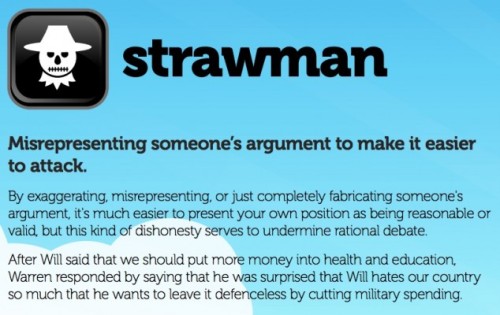
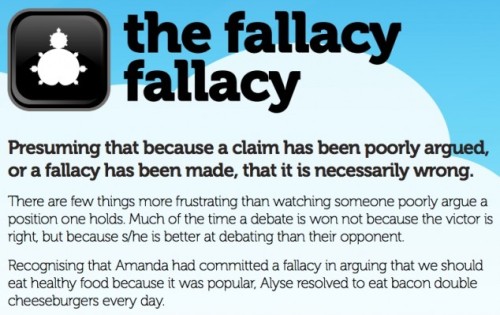

list of celestial words 🕊✨
astral (adj.) of, connected with, or resembling the stars. elysian (adj.) relating to or characteristic of heaven or paradise; peaceful and perfect. crepuscular (adj.) of, resembling, or relating to twilight. sempiternal (adj.) eternal and unchanging; everlasting. syzygy (n.) an alignment of three celestial objects, as the sun, the earth, and either the moon or a planet. empyrean (adj.) belonging to or deriving from heaven. sidereal (adj.) pertaining to the distant stars. paradisaic (adj.) of or belonging to heaven or god. lambent (adj.) (of light or fire) glowing, gleaming, or flickering with a soft radiance.

a quick visual guide to the enemies to lovers trope because a lot of y’all are confused
a massively extended version of ruthlesscalculus’ post
General Tips
Joss Whedon’s Top 10 Writing Tips
Getting Out of Your Comfort Zone
34 Writing Tips that will make you a Better Writer
50 Free resources that will improve your writing skills
5 ways to get out of the comfort zone and become a stronger writer
10 ways to avoid Writing Insecurity
The Writer’s Guide to Overcoming Insecurity
The Difference Between Good Writers and Bad Writers
You’re Not Hemingway - Developing Your Own Style
7 Ways to use Brain Science to Hook Readers and Reel them In
8 Short Story Tips from Kurt Vonnegut
How to Show, Not Tell
5 Essential Story Ingredients
How to Write Fiction that grabs your readers from page one
Why research is important in writing
Make Your Reader Root for Your Main Character
Writing Ergonomics (Staying Comfortable Whilst Writing)
The Importance of Body Language
Character Development
10 days of Character Building
Name Generators
Name Playground
Universal Mary Sue Litmus Test
Seven Common Character Types
Handling a Cast of Thousands Part 1 - Getting To Know Your Characters
Web Resources for Developing Characters
Building Fictional Characters
Fiction Writer’s Character Chart
Character Building Workshop
Tips for Characterization
Character Chart for Fiction Writers
Villains are people too but…
How to Write a Character Bible
Character Development Exercises
All Your Characters Talk the Same - And They’re Not A Hivemind!
Medieval Names Archive
Sympathy Without Saintliness
Family Echo (Family Tree Maker)
Behind The Name
100 Character Development Questions for Writers
Aether’s Character Development Worksheet
The 12 Common Archetypes
Six Types of Courageous Characters
Kazza’s List of Character Secrets - Part 1, Part 2
Creating Believable Characters With Personality
Body Language Cheat Sheet
Creating Fictional Characters Series
Three Ways to Avoid Lazy Character Description
7 Rules for Picking Names for Fictional Characters
Character Development Questionnaire
How to Create Fictional Characters
Character Name Resources
Character Development Template
Character Development Through Hobbies
Character Flaws List
10 Questions for Creating Believable Characters
Ari’s Archetype Series
How to Craft Compelling Characters
List of 200 Character Traits
Writing Characters of the Opposite Sex
Making Your Characters Likable
Do you really know your characters?
Character Development: Virtues
Character Development: Vices
Character Morality Alignment
List of Negative Personality Traits
List of Positive Personality Traits
List of Emotions - Positive
List of Emotions - Negative
Loon’s Character Development Series - Part 1, Part 2, Part 3, Part 4
Phobia List A-L (Part 1), M-Z (Part 2)
30 Day In Depth Character Development Meme
Words for Emotions based on Severity
Eight Bad Characters
High Level Description of the Sixteen Personality Types
Female Characters
How Not to Write Female Characters
Writing Female Characters
How to write empowering female characters
Why I write strong female characters
Red Flags for Female Characters Written by Men
Writing strong female characters
The Female Character Flowchart
Eight Heroine Archetypes
Male Characters
Eight Hero Archetypes
Tips for Specific Characters
Writing A Vampire
Writing Pansexual Characters
Writing Characters on the Police Force
Writing Drunk Characters
Writing A Manipulative Character
Writing A Friends With Benefits Relationship
Writing A Natural Born Leader
Writing A Flirtatious Character
Writing A Nice Character
Fiction Writing Exercises for Creating Villains
Five Traits to Contribute to an Epic Villain
Writing Villains that Rock
Writing British Characters
How To Write A Character With A Baby
On Assassin Characters
Dialogue
It’s Not What They Say…
Top 8 Tips for Writing Dialogue
Speaking of Dialogue
The Great Said Debate
He Said, She Said, Who Said What?
How to Write Dialogue Unique to Your Characters
Writing Dialogue: Go for Realistic, Not Real-Life
Point of View
Establishing The Right Point of View
How to Start Writing in the Third Person
The I Problem
Plot, Conflict, Structure and Outline
Writing A Novel Using the Snowflake Method
Effectively Outlining Your Novel
Conflict and Character Within Story Structure
Outlining Your Plot
Ideas, Plots and Using the Premise Sheets
How To Write A Novel
Creating Conflict and Sustaining Suspense
Plunge Right In…Into Your Story, That Is
Tips for Creating a Compelling Plot
36 (plus one) Dramatic Situations
The Evil Overlord Devises A Plot: Excerpt from Stupid Plot Tricks
Conflict Test
What is Conflict?
Monomyth
The Hero’s Journey: Summary of Steps
Outline Your Novel in Thirty Minutes
Plotting Without Fears
Novel Outlining 101
Writing The Perfect Scene
One-Page Plotting
The Great Swampy Middle
How Can You Know What Belongs In Your Book?
Create A Plot Outline in 8 Easy Steps
How to Organize and Develop Ideas for Your Novel
Create Structure in your novel using index cards
Choosing the best outline method for you
Hatch’s Plot Bank
Setting & Worldbuilding
Magical Word Builder’s Guide
I Love The End Of The World
World Building 101
The Art of Description: Eight Tips to Help Bring Your Settings to Life
Creating the Perfect Setting - Part 1
Creating a Believable World
Setting
Character and Setting Interactions
Maps Workshop - Developing the Fictional World Through Mapping
World Builders Project
How To Create Fantasy Worlds
Creating Fantasy and Science Fiction Worlds
Creativity Boosters* denotes prompts
*Creative Writing Prompts
*Ink Provoking
*Story Starter
*Story Spinner
*Story Kitchen
*Language is a Virus
*The Dabbling Mum
Quick Story Idea Generator
Solve Your Problems By Simply Saying Them Out Loud
Busting Your Writing Rut
Creative Acceleration: 11 Tips To Engineer A Productive Flow
Writing Inspiration, Or Sex on a Bicycle
The Seven Major Beginner Mistakes
Complete Your First Book with these 9 Simple Writing Habits
Free Association, Active Imagination, Twilight Imaging
Random Book Title Generator
Finishing Your Novel
Story Starters & Idea Generators
Words to Use More Often
Revision & Grammar
How To Rewrite
Editing Recipe
Cliche Finder
Revising Your Novel: Read What You’ve Written
Writing 101: Revising A Novel
20 Common Grammar Mistakes That (Almost) Everyone Makes
Synonyms for the Most Commonly Used Words of the English Language
Grammar Urban Legends
Tools & Software
Tip Of My Tongue - Find the word you’re looking for
Write or Die - Stay motivated
Stay Focused - Tool for Chrome, lock yourself out of distracting websites
My Writing Nook - Online Text Editor, Free
Bubbl.us - Online Mind Map Application, Free
Family Echo - Online Family Tree Maker, Free
Freemind - Mind Map Application; Free; Windows, Mac, Linux, Portable
Xmind - Mind Map Application; Free; Windows, Mac, Linux, Portable
Liquid Story Binder - Novel Organization and Writing Application; free trial, $45.95; Windows, Portable
Scrivener - Novel Organization and Writing Application; free trial, $39.95; Mac
SuperNotecard - Novel Organization and Writing Application; free trial, $29; Windows, Mac, Linux, portable
yWriter - Novel Organization and Writing Application; free; Windows, Linux, portable
JDarkRoom - Minimalist Text Editing Application; free; Windows, Mac, Linux, portable
AutoRealm - Map Creation Application; free; Windows, Linux with Wine
Specific Help
Fashion Terminology
All About Kissing
Genre Help: Romance
187 Mental Illnesses
Types of Mental Illness
Eye Color List
Spectral Groupings
I am a(n):
⚪ Male
⚪ Female
🔘 Writer
Looking for
⚪ Boyfriend
⚪ Girlfriend
🔘 An incredibly specific word that I can't remember
Best Friends Forever: Writing Close Friendships
Nearly every book I’ve read has a protagonist. And all of those protagonists were surrounded by several, if not a great many, friends. Within my own stories, my protagonists have quite a few friends. Among those friends, there are usually one or two, maybe three, friends that the protagonist is especially close to. One of my all time favorite series, Vampire Academy by Richelle Mead, follows best friends Lissa and Rose, who act like sisters most of the time. While reading, it’s clear that the two have known each other for a long while, see each other as their closest allies, and see their lives as them against the world. It’s obvious that they’re very close. The question is how does Mead accomplish this? How does any author establish these types of close friendships between characters without blatantly telling the reader?
If you think of your own close friendships, or your best friends, you’ll probably recognize five or more of the following in your relationship with these particular friends –
Understand without speaking.
When you’ve known someone a really long time, or have spent so much time together, you get to know the person so well that you pick up on their habits and quirks and body language. When they bite their lip, you know it’s not that they’re confused, but that the water works are about to begin and it’s time to get them out of there. If their jaw tenses, you take their hand and squeeze it to show they don’t have to face the world alone. They do the same for you. You understand each other so well that no one needs to say anything, and it’s obvious that it’s time for coffee and chick flicks, or that it’s time to head to the soccer field to kick around a ball and de-stress. You might not be able to read each others’ minds, but you understand each other well enough that neither of you needs to say anything. You just do.
Tease each other.
There’s artificial teasing, there’s bully teasing, there’s flirting teasing. But among friends, it’s the way we gently point out each others’ issues and faults without being cruel, it’s how we remind each other of good times, it’s how we show each other that we don’t have to be adult or grown up (regardless of age), it’s how we connect and communicate. Between best friends, teasing is just another way we talk to each other. There’s no malice, jealousy, anger, or bitterness behind it. It’s often light, fun, laughable, and in good humor. It’s a way to make your friend laugh when they’re on the verge of tears. It’s the way we build each other up when our plans fall through. Teasing is always there, but it never, ever becomes a way of putting each other down.
Rely on each other.
Through good times and bad, friends can always be relied upon to be there and help each other. There are no excuses, there is no distance, there are no events that could prevent two best buds from helping each other out in times of emotional and physical need, and friends rely on each other for that. But friends also rely on each other for comfort, for support, for encouragement, and for all the things it seems the world wants to take away from us. Friends are there to remind us that what we want to do, where we want to go, is completely possible and achievable.
Seek each other’s advice.
Perhaps more than our parents, teachers, advisors, and mentors, we seek advice from our friends first. This might be a perfectly faulty action, but because friends understand each other and rely on each other, it’s natural that we seek advice from those we know, and who know us, best. This advice seeking might be as simple as wondering which outfit to wear for an interview, to legitimately questioning your life’s direction and wanting to know whether you should keep on that path. And because you can rely on your friend, they help you out, if only to making fun of something to help you laugh and remind you to loosen up and stop worrying.
Feel comfortable around one another.
As with all of the above, friends are comfortable with each other enough to seek that advice, tease each other, and rely on one another. Even more than that, friends are comfortable with and around each other that they don’t care if they do something stupid, or say something idiotic, or accidently snort and spew food from the mouth in response to something funny (guilty.) Because they’re comfortable with each other, these things happen and no one cares, because these silly things hardly define us. It’s the same with crying, or showing how truly angry we are, or how hopeless we feel. Friends know each other so well that they be vulnerable and sensitive, and the friend won’t misuse them.
Miss each other when gone.
Probably the greatest understatement of all these, but best friends will miss each other. They might be separated for only a day, maybe one has moved away. But miss each other they will, just the same. The effect this has on each other is anyone’s guess, as everyone reacts differently to separation. Some might become depressed, others might lash out, and some might just have that aching sense of loneliness in their gut that seems like it can’t ever be filled. There is most definitely a reaction, and missing each other is just the surface.
Have similar interests/hobbies/goals/pasts.
Whether they grew up together, or met at summer camp, or took the same art class, friends have similar interests. There’s something that initially drew them together, and in writing a book you can’t just put that aside. It will always be their foundation, and while the foundation can grow, there’s that one point, however small and insignificant in the present, that brought them together and caused them to meet (in Vampire Academy, Lissa and Rose both had long names they had to spell in school at young ages. Later on, they grew even closer together when they both survived the car accident that killed the rest of Lissa’s family.)
Grow together as individuals and as friends.
If any relationship is to last and get stronger, growth is a must. Trials, tragedy, celebration, joy; all these add to and change a person, their actions, and how they consider new situations, and this happens in a friendship as well. While going through similar occurrences, if friends cannot grow together, change, and mature together, then their friendship will remain the way it was when it started, and it won’t be able to adjust and react properly to new situations that the friends encounter. Without the ability to grow, the friendship will become stagnant and brittle, and eventually break. Make sure to show the friends, and their friendship, grow through the story.
Don’t judge.
It’s simple. Close friends, who understand, rely, advise, and help each other, just don’t judge. Regardless of what one does, or what the other thinks about a topic, they don’t judge. They accept that they’re individuals with different views and opinions on some things. After all, you can’t have the exact same views as someone else. There are similarities, there are differences, but despite what those are, there should never be any judgment. Friends accept each other for who they are.
Don’t try to change each other.
As I said, friends accept each other. They don’t try to change one another, or mould each other into what their ideal would be, because that would be the farthest thing from acceptance. Friends understand, they don’t judge, and they don’t try to change their friends’ personalities, opinions, views, likes or dislikes, or their hopes and dreams. They accept everything about each other, and celebrate their differences.
Confide everything.
Friends naturally want to talk with each other and discuss the things that happen in their lives, but best friends, as I’m sure you know, will talk about everything. They confide everything in each other without fear of being rejected or judged. They share their thoughts, their dreams, whatever comes to mind, and in sharing so much with each other, their bond grows.
Fights sometimes happen, but making amends occurs quickly.
No friendship is perfect, and because there are two people involved, disagreements are bound to occur. But when fights begin, whatever the topic, close friends will try to move past the argument and come to a conclusion, generally in the form of an agreement or better understanding of one another. They won’t linger on their differing opinions, and will try to make amends as soon as they can. This leads to stronger friendships, and is a way that the friendship can grow and develop.
Can’t imagine life without each other.
Perhaps more than anything else, best friends simply can’t imagine what life would be like if they weren’t together. It’s something they don’t want to think about, and is the last thing they’ll focus on when confronted with the real possibility of lifelong separation. They’ll come up with excuses, plans, arguments, anything that might be able to change the impending separation. They literally can’t picture their life being apart, because their personalities and dreams and emotional selves are so connected that the very idea of being apart for good is like imagining themselves being split in half (this goes for a romantic relationship as well, though more specifically within one where the two were best friends before they fell in love).
These are just a basic few things that can comprise a close friendship. You don’t need to use all of these, and by all means, don’t limit yourself to using only the ones I’ve listed. Use some, use none, but make sure you really look at the characters you have and focus on showing that closeness where it’s supposed to exist. It offers greater development of both characters, adds to the realism of the plot, and helps with the overall story.
For more on this topic with examples, check out Livia Blackburne’s awesome article –
http://blog.liviablackburne.com/2011/06/twenty-ways-to-describe-your-characters.html
Good luck and good writing!
~ Everyday Writer

The Five Stages of Decomposition
Found a little summary of human decomposition primarily used for writing, but an interesting read for everyone else.
Following death, the human body progresses through five basic stages of decomposition. The duration and degree of each stage is largely influenced by the environment (temperature, humidity, etc.), body mass, any wrappings or coverings of the body, and obviously scavenging or other post-mortem disturbances. Additionally, submerged or buried bodies will decompose much differently than bodies left on the ground. This is what I will be referring to below. Here are the general descriptions of the five stages of decomposition:
Fresh
The fresh stage begins immediately after death when the circulatory system (heart beating/pumping blood) stops functioning. It is during this stage that the blood will settle with gravity creating a condition known as lividity. After several hours the muscles will also begin to stiffen in a process known as rigor mortis. The body temperature will also begin to acclimate to the environment. Cells will begin to break down and release enzymes during a process called autolysis which can cause blisters on the skin. The anaerobic organisms in the digestive tract will begin to multiply, producing acids and gases (the source of the bad odors). This process is often referred to as putrefaction.
Bloat
As the name implies, the gases being produced during putrefaction begin to build and will give the body a distended appearance. Gases and fluid will eventually escape through the natural orifices as the pressure builds. As the gastrointestinal bacteria multiply and can lead to conditions like marbling which is a discoloration pattern seen in the skin. You may also see green discoloration in the abdomen areas and eventually a darkening (blackish) coloring of the skin overall as the process advances. Interestingly enough; I remember one time I was giving a lecture on forensic entomology at a college campus and after the lecture a serious looking young black student approached me. She asked me why I only showed pictures of black victims in my presentation. I was a bit taken back and briefly confused as I ran through a mental recap of the cases I presented. I finally told her that all of the victims were in fact white (Caucasian) in life but due to this process their skin darkened. It was an eye-opening experience and I made sure to describe this process more effectively when lecturing the public.
Active Decay
During his phase the body begins to lose much of it’s fluids and mass (tissue) through purge and insect and/or vertebrate scavenging (coyote, fox, lion, etc). During this phase you may see very large maggot masses and notice a considerable increase in foul odors.
Advanced Decay
This phase is the end of the active decay process. Temperatures can either speed up (heat) or slow down (cold) how quickly a body reaches this phase. The body has very little body mass and soil staining of the surrounding soils is still evident. This soil staining (from body fluids) may actually kill some of the surrounding vegetation temporarily. Maggots will migrate away from the body to pupate and flies will cease laying eggs.
Dry/Skeletal
This phase is the last measurable stage of decomposition. The timing of this stage varies widely by environment. For example, a body in Florida in July (hot/humid) may reach this stage in a week while in the Winter in the Rocky Mountains (cold/arid) it might take months. If there is any skin left it will be leather-like and very tough. Mostly the body is reduced to bones and connective tissue. There is no biomass available for diverse insect colonization. Some beetles and adventitious insects may colonize a body for shelter or feeding on other insects and connective tissue. Over time the bones may “bleach” (turn white) with exposure to sunlight and eventually will begin to exhibit cracks after several years. These weathering cracks are distinctive and would not be confused with a fresh break (injury) unless by an inexperienced analyst.
Not all character development is positive. Characters can, and in my opinion, should, develop both negative and positive traits throughout the course of their story. As the story goes, they shouldn’t be perfected, they’re people, not artpieces, and so there shouldn’t be a stage where they’ve improved/changed exclusively for the better, to the point where they have no negative traits at all.
-
 eternalparadisearchive reblogged this · 1 month ago
eternalparadisearchive reblogged this · 1 month ago -
 ladyrhize liked this · 2 months ago
ladyrhize liked this · 2 months ago -
 burningtheoristluminary liked this · 4 months ago
burningtheoristluminary liked this · 4 months ago -
 blorbpull liked this · 6 months ago
blorbpull liked this · 6 months ago -
 staypointeon liked this · 7 months ago
staypointeon liked this · 7 months ago -
 elitparadox liked this · 8 months ago
elitparadox liked this · 8 months ago -
 wizard-writings reblogged this · 9 months ago
wizard-writings reblogged this · 9 months ago -
 newmoonera05 reblogged this · 11 months ago
newmoonera05 reblogged this · 11 months ago -
 nightinthenetherworld reblogged this · 1 year ago
nightinthenetherworld reblogged this · 1 year ago -
 isleofnajera liked this · 1 year ago
isleofnajera liked this · 1 year ago -
 xiumo reblogged this · 1 year ago
xiumo reblogged this · 1 year ago -
 endwasntavailable liked this · 1 year ago
endwasntavailable liked this · 1 year ago -
 ajkorvidian liked this · 1 year ago
ajkorvidian liked this · 1 year ago -
 sorryclarence liked this · 1 year ago
sorryclarence liked this · 1 year ago -
 regeek liked this · 1 year ago
regeek liked this · 1 year ago -
 heckcareoxytwit reblogged this · 1 year ago
heckcareoxytwit reblogged this · 1 year ago -
 goldenyouthfanfic reblogged this · 1 year ago
goldenyouthfanfic reblogged this · 1 year ago -
 dinkflocculent liked this · 1 year ago
dinkflocculent liked this · 1 year ago -
 fairylighttea reblogged this · 1 year ago
fairylighttea reblogged this · 1 year ago -
 star-maker-rain-dancer liked this · 1 year ago
star-maker-rain-dancer liked this · 1 year ago -
 fallinloveg liked this · 1 year ago
fallinloveg liked this · 1 year ago -
 lilofthevally liked this · 1 year ago
lilofthevally liked this · 1 year ago -
 rosemallowss reblogged this · 1 year ago
rosemallowss reblogged this · 1 year ago -
 rosemallowss liked this · 1 year ago
rosemallowss liked this · 1 year ago -
 bubblegumpink21 liked this · 1 year ago
bubblegumpink21 liked this · 1 year ago -
 morgraythedark reblogged this · 1 year ago
morgraythedark reblogged this · 1 year ago -
 morgraythedark liked this · 1 year ago
morgraythedark liked this · 1 year ago -
 riaddanantrabob liked this · 1 year ago
riaddanantrabob liked this · 1 year ago -
 misterrabbit-writes liked this · 1 year ago
misterrabbit-writes liked this · 1 year ago -
 millennial-teenybopper liked this · 1 year ago
millennial-teenybopper liked this · 1 year ago -
 stonerchic liked this · 1 year ago
stonerchic liked this · 1 year ago -
 tartaglias-whore liked this · 1 year ago
tartaglias-whore liked this · 1 year ago -
 biojoomlethankbang liked this · 1 year ago
biojoomlethankbang liked this · 1 year ago -
 runninginmyenclosure reblogged this · 1 year ago
runninginmyenclosure reblogged this · 1 year ago -
 reninmaru liked this · 1 year ago
reninmaru liked this · 1 year ago -
 osoutunde liked this · 1 year ago
osoutunde liked this · 1 year ago -
 davina444 liked this · 1 year ago
davina444 liked this · 1 year ago -
 nickname-x reblogged this · 1 year ago
nickname-x reblogged this · 1 year ago
